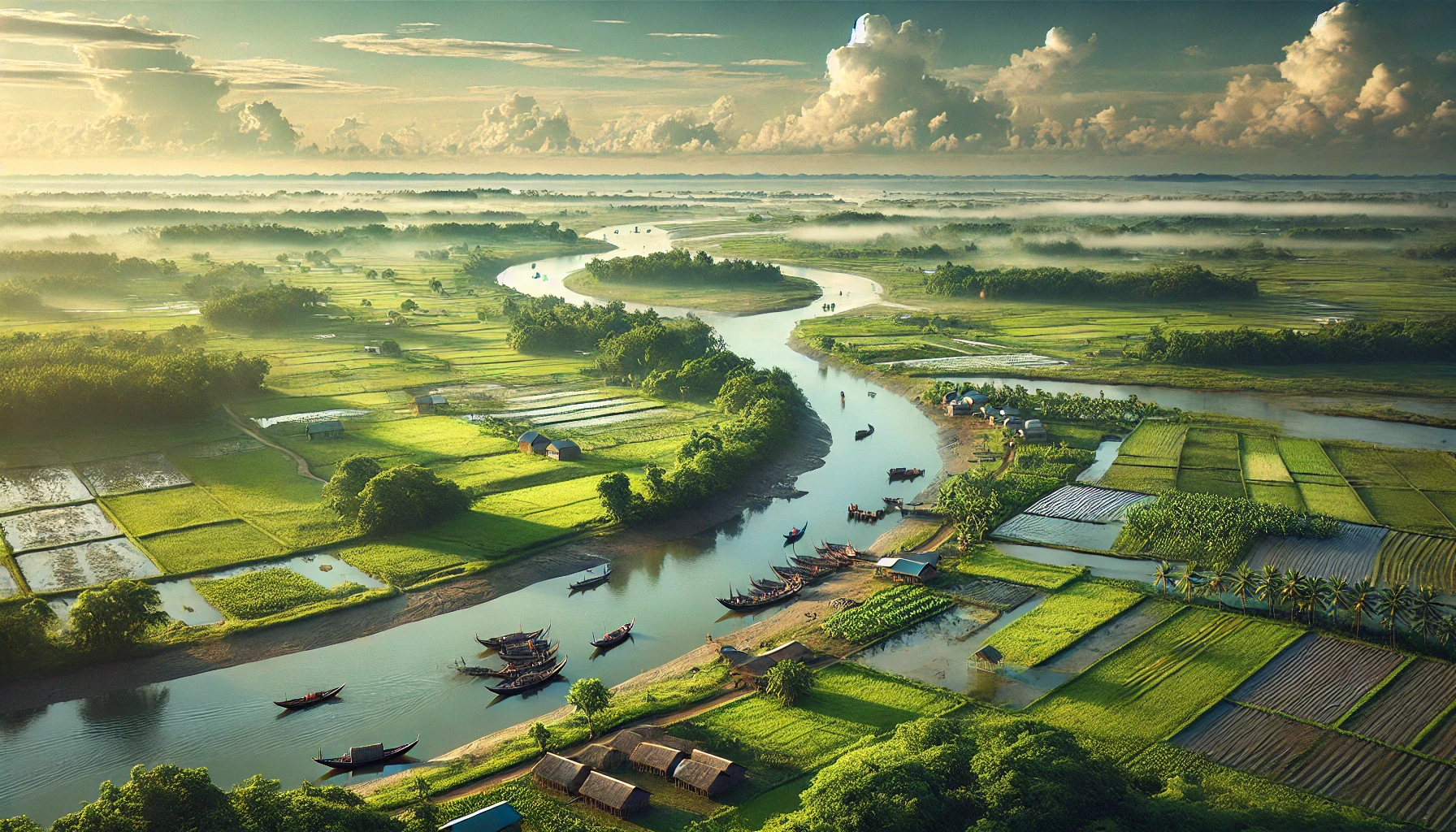Chattogram, Bangladesh’s second-largest city and a major economic hub, is a place where history, nature, and progress converge. Known as the “Gateway of Bangladesh,” this district and city stand as a testament to centuries of trade, cultural richness, and natural beauty. Whether through its ancient role on the Silk Road, its pristine hills and sea, or its bustling modern port, Chattogram continues to inspire pride in its people and intrigue among its visitors.
For those eager to explore a land of serene landscapes, cultural heritage, and economic importance, Chattogram offers an unforgettable journey into a unique corner of South Asia.
Cultural Heritage: Preserving Traditions Through Time
Chattogram’s culture is a harmonious blend of tradition, pride, and resilience. Its roots stretch back centuries, influenced by diverse communities, maritime trade, and local initiatives.
For instance, in 1875, the Chattogram Association was formed with a clear purpose: to protect and preserve the cultural identity of the region’s people. This pioneering organization focused on promoting local literature, the Chattogram dialect, and folk traditions, ensuring they flourished in a rapidly changing world.
The Unique Chattogram Dialect
The Chattogram dialect, spoken with a distinct rhythm and vocabulary, stands apart as a hallmark of the region’s cultural heritage. Influenced by trade and historical exchanges with various ethnic groups, the dialect reflects the area’s rich, multicultural interactions. For locals, the language is not just a mode of communication but also a symbol of identity and belonging.
Festivals and Folklore
The people of Chattogram celebrate a variety of festivals throughout the year, ranging from traditional Bengali celebrations to unique local customs. Folk songs, dance, and storytelling play an integral role in these events, passing down myths, values, and history through generations.
Notably, rural and urban areas alike come alive with color and joy during festivals such as Noboborsho (Bengali New Year) and boat races, which are a tradition deeply rooted in the district’s relationship with rivers and waterways.
Chattogram District and Its Upazilas
Chattogram District is divided into 15 upazilas, each offering its own unique attractions and significance.
Upazilas of Chattogram:
-
Anwara Upazila – Famous for Parki Beach and the Korean Export Processing Zone (KEPZ).
-
Banshkhali Upazila – Known for Banshkhali Eco Park and wildlife sanctuary.
-
Boalkhali Upazila – Home to scenic rivers and historical sites.
-
Chandanaish Upazila – Rich in natural beauty and traditional handicrafts.
-
Fatikchhari Upazila – Features waterfalls, forests, and tea gardens.
-
Hathazari Upazila – Location of Chittagong University and the famous Hathazari Madrasah.
-
Lohagara Upazila – Offers historical sites and local markets.
-
Mirsharai Upazila – Home to the stunning Napittachora Waterfall and Banshbaria Beach.
-
Patiya Upazila – A cultural and commercial hub with deep-rooted traditions.
-
Rangunia Upazila – Offers beautiful hilly landscapes and Kaptai Lake access.
-
Raozan Upazila – Known for its educational institutions and lush greenery.
-
Sandwip Upazila – An island upazila with stunning coastal views.
-
Satkania Upazila – Features historic mosques and temples.
-
Sitakunda Upazila – Home to Chandranath Hill, Guliakhali Beach, and eco-parks.
-
Chattogram Metropolitan Area – The heart of the district, covering the city’s main commercial and residential zones.
A Land of Geographical Diversity and Natural Beauty
Chattogram’s landscape is a stunning mosaic of geographical wonders, making it one of the most diverse and visually captivating regions of Bangladesh.
Its terrain includes:
-
Rolling Hills and Forests: The eastern parts of Chattogram are dominated by scenic hill tracts, with lush forests and hidden valleys. These hills are home to indigenous communities, each with their own culture and traditions, enriching the region’s diversity.
-
Serene Valleys: Nestled between the hills are tranquil valleys, where small rivers and streams weave through fertile fields and villages. These landscapes offer a peaceful escape for travelers and a source of livelihood for the locals.
-
The Bay of Bengal: Chattogram’s long coastline with the Bay of Bengal adds to its charm. The city’s natural harbor, shaped by the sea’s tides, has played a pivotal role in shaping its economy and history.
-
Tropical Climate: With its lush greenery and warm, humid climate, Chattogram’s natural beauty thrives year-round, offering an inviting environment for adventurers and nature lovers alike.
Chattogram: A Pillar of Trade and Industry
Often referred to as the “Business Capital of Bangladesh,” Chattogram is synonymous with economic growth and opportunity.
The Historic Port of Chattogram
For centuries, Chattogram’s port has served as a key player in international trade. Located along the southern branch of the ancient Silk Road, it facilitated the movement of goods between South Asia, China, and the Middle East.
Even today, the port remains the busiest in Bangladesh, handling over 90% of the country’s trade. From massive container ships to fishing vessels, Chattogram port connects Bangladesh to global markets, driving the nation’s economy.

A Thriving Industrial Hub
The city is also home to diverse industries, including:
-
Shipbuilding: A growing sector where local expertise produces vessels for global clients.
-
Textiles and Garments: One of Bangladesh’s largest export industries.
-
Food Processing and Fisheries: With access to the sea, Chattogram plays a key role in food exports.
As a result, the industrial zones of Chattogram are constantly expanding, creating jobs and contributing significantly to the nation’s GDP.
Modern Chattogram: A City of Peaceful Growth
Despite its role as a bustling economic hub, Chattogram retains a sense of tranquility that sets it apart from other major cities. Unlike the crowded streets of Dhaka, Chattogram offers wide roads and a peaceful atmosphere, providing its residents with a better quality of life.
Why Chattogram is Special
Chattogram is a city like no other. It is where the past and present come together, creating a unique blend of culture, trade, and natural beauty.
What makes Chattogram truly stand out includes:
-
Cultural Pride: A region that continues to preserve its local literature, language, and traditions.
-
Natural Wonders: From green hills and valleys to the vast sea, the district’s geography is unmatched.
-
Historic Importance: One of the oldest natural ports in the world, with a legacy of trade stretching back centuries.
-
Economic Powerhouse: The lifeline of Bangladesh’s economy, driving growth through its industries and port.
-
Livable and Peaceful: A rare balance of economic activity and a serene urban lifestyle.
How to Get to Chattogram
Chattogram is well-connected with the rest of Bangladesh:
-
By Air: Shah Amanat International Airport (CGP) offers flights to and from Dhaka, Sylhet, Cox’s Bazar, and international destinations.
-
By Train: The Chattogram Railway Station has direct trains from Dhaka, Sylhet, and other major cities.
-
By Road: A smooth highway connects Chattogram to Dhaka, with luxury bus services operating regularly.
Final Thoughts
Ultimately, Chattogram is more than just a district; it is a story of resilience, beauty, and progress. Whether you’re captivated by the green hills, the peaceful beaches, or the thriving industries, Chattogram promises to leave a lasting impression.





One thought on “Chattogram – The Gateway of Natural Beauty in Bangladesh”